 Dubai is going to be home to the world’s largest Concentrated Solar Power (CSP) project, costing 14.2 billion Dirhams (USD 3.87 billion). The project comes as part of implementing the fourth stage of the Mohammad Bin Rashid Al Maktoum Solar Park and to support the end goals of Dubai Clean Energy Strategy 2050. To be implemented by Dubai Water and Electricity Authority (Dewa), it is expected to generate 1,000 megawatts (MW) of clean energy when completed.
Dubai is going to be home to the world’s largest Concentrated Solar Power (CSP) project, costing 14.2 billion Dirhams (USD 3.87 billion). The project comes as part of implementing the fourth stage of the Mohammad Bin Rashid Al Maktoum Solar Park and to support the end goals of Dubai Clean Energy Strategy 2050. To be implemented by Dubai Water and Electricity Authority (Dewa), it is expected to generate 1,000 megawatts (MW) of clean energy when completed.
Using the Independent Power Producer (IPP) model, it will include the world’s tallest solar tower, at 260 meters high, and a 100 billion Dirham fund to finance the plan. Furthermore, 500 million Dirhams will be allocated for research and development works in the field of smart networks and improvement of energy efficiency.
Concentrated solar power plants, unlike solar energy drawn from photovoltaic cells, use a large array of mirrors, called heliostats, to concentrate a large area of sunlight onto a small area, typically on top of a tower.
Electricity is generated when the concentrated light gets converted to heat, which drives a steam turbine connected to an electrical power generator. An advantage of CSP is that thermal heat can be stored easily, making it possible to produce electricity after sunset.
The Dubai plant will have several thousand heliostats located around a tower. The resulting heat-transfer fluid will power a steam turbine to generate electricity. Incredibly, the new plant will deliver power at less than 8 cents per kilowatt per hour, down from the typical 15 kilowatts per hour rate. Once complete, the solar park is expected to
reduce 6.5 million tons of carbon emissions each year. A typical coal plant produces around 3.5 million tons of CO2 per year.
Dubai Clean Energy Strategy 2050 consists of five main pillars: infrastructure, legislation, funding, building capacities and skills, and having an environment-friendly energy mix.
The infrastructure pillar includes initiatives such as Mohammad Bin Rashid Al Maktoum Solar Park, which is the largest generator of solar energy in the world from a single location, with a capacity to produce 5,000MW by 2030, and a total investment of 50 billion Dirhams. The first phase of this project began operations in 2013 and the second will begin this year. Estimated to be in full operation in 2030, the Solar Park will produce 25 percent of the
total energy production in Dubai and 75 percent by 2050.
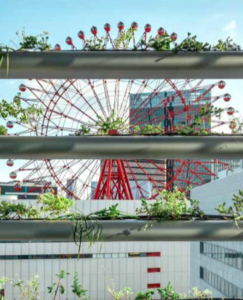 Yanmar Headquarters, Osaka Japan The Yanmar headquarters building is designed with the concept of "coexistence with nature", and emphasizes integration with life and nature. Rusted city beekeeping, natural ventilation system utilizing the spiral staircase in the center of the building, the entrance where water flows make this landscape with natural elements imitating nature a perfect biophilic design.
Yanmar Headquarters, Osaka Japan The Yanmar headquarters building is designed with the concept of "coexistence with nature", and emphasizes integration with life and nature. Rusted city beekeeping, natural ventilation system utilizing the spiral staircase in the center of the building, the entrance where water flows make this landscape with natural elements imitating nature a perfect biophilic design.
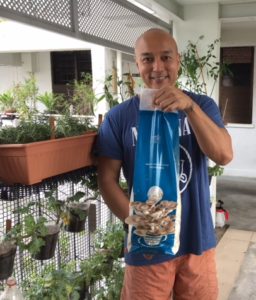
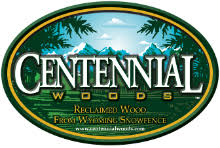 At the International Green Building Conference IGBC 2017 Singapore, Centennial Woods exhibited their Reclaimed wood and sponsored the Wall Art Pieces & Green Flooring for the VIP Lounge of BEXAsia.
At the International Green Building Conference IGBC 2017 Singapore, Centennial Woods exhibited their Reclaimed wood and sponsored the Wall Art Pieces & Green Flooring for the VIP Lounge of BEXAsia.
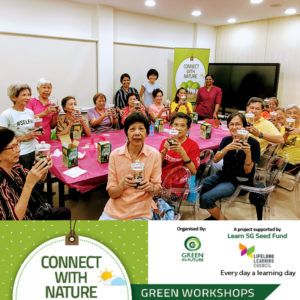 Green workshops: Connect with Nature workshops designed for elders and seniors, organized by Green in Future
Green workshops: Connect with Nature workshops designed for elders and seniors, organized by Green in Future  Dubai is going to be home to the world’s largest Concentrated Solar Power (CSP) project, costing 14.2 billion Dirhams (USD 3.87 billion). The project comes as part of implementing the fourth stage of the Mohammad Bin Rashid Al Maktoum Solar Park and to support the end goals of Dubai Clean Energy Strategy 2050. To be implemented by Dubai Water and Electricity Authority (Dewa), it is expected to generate 1,000 megawatts (MW) of clean energy when completed.
Dubai is going to be home to the world’s largest Concentrated Solar Power (CSP) project, costing 14.2 billion Dirhams (USD 3.87 billion). The project comes as part of implementing the fourth stage of the Mohammad Bin Rashid Al Maktoum Solar Park and to support the end goals of Dubai Clean Energy Strategy 2050. To be implemented by Dubai Water and Electricity Authority (Dewa), it is expected to generate 1,000 megawatts (MW) of clean energy when completed.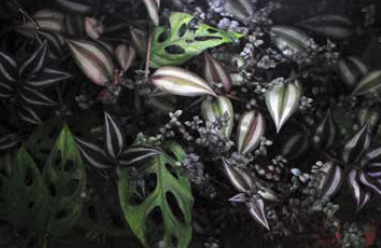 Designers often have to divide their attention between functional and aesthetic requirements. While there are literally hundreds of plants to choose from, the average landscape design palette probably only consists of up to 20 plants that are commonly found in our urban landscape. These plants are there for a reason; they are cost-effective, can be procured with ease, not too difficult to maintain and possess certain rudimentary aesthetic attributes. Think Yellow Creeping Daisy (Sphagneticola trilobata) for ground coverage with the occasional yellow flowers and Heliconia ‘American Dwarf’ for its fuller volume and ornamental potential.
Designers often have to divide their attention between functional and aesthetic requirements. While there are literally hundreds of plants to choose from, the average landscape design palette probably only consists of up to 20 plants that are commonly found in our urban landscape. These plants are there for a reason; they are cost-effective, can be procured with ease, not too difficult to maintain and possess certain rudimentary aesthetic attributes. Think Yellow Creeping Daisy (Sphagneticola trilobata) for ground coverage with the occasional yellow flowers and Heliconia ‘American Dwarf’ for its fuller volume and ornamental potential. Recent studies in Urban Heat Island (UHI) mitigation techniques have shown that greenery can improve both the indoor and outdoor environment. Green roofs can drastically lower direct exposure to solar radiation andreduce surface temperature by close to 50%. However, not all plants carry the same temperature reduction potential. In this light, it is important that the plant selection process includes consideration of temperature reduction potential for improved thermal comfort. Specific functional attributes such as evapotranspiration rate and albedo provide valuable insight into the thermal performance of plants. In addition to beautifying the urban landscape, plants serve as delivery agents of water, moving it from the soil to the atmosphere through its leaves and in the process improving the thermal environment.
Recent studies in Urban Heat Island (UHI) mitigation techniques have shown that greenery can improve both the indoor and outdoor environment. Green roofs can drastically lower direct exposure to solar radiation andreduce surface temperature by close to 50%. However, not all plants carry the same temperature reduction potential. In this light, it is important that the plant selection process includes consideration of temperature reduction potential for improved thermal comfort. Specific functional attributes such as evapotranspiration rate and albedo provide valuable insight into the thermal performance of plants. In addition to beautifying the urban landscape, plants serve as delivery agents of water, moving it from the soil to the atmosphere through its leaves and in the process improving the thermal environment.
